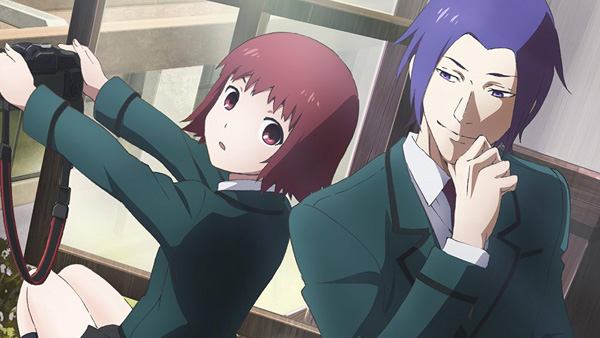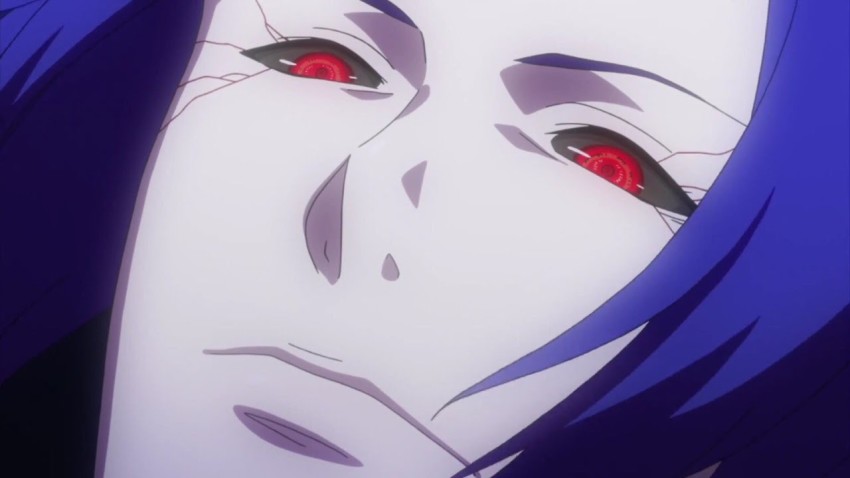Tokyo Ghoul: Jack & Pinto
August 20, 2017 · 0 comments
By Andrew Osmond.
 As a wise comic-book character once said, “It’s not all about you”. The main Tokyo Ghoul franchise, including the TV series available from Anime Limited and the live-action film released this summer in Japan, focuses on the adventures of Kaneki and his induction into the Ghoul realm. However, the series made clear there were many other stories to be told about this world, about a huge range of characters.
As a wise comic-book character once said, “It’s not all about you”. The main Tokyo Ghoul franchise, including the TV series available from Anime Limited and the live-action film released this summer in Japan, focuses on the adventures of Kaneki and his induction into the Ghoul realm. However, the series made clear there were many other stories to be told about this world, about a huge range of characters.
The two Tokyo Ghoul stories “Jack” and “Pinto” are both prequels, set years before the first TV episode. In theory you could watch them first, but I’d definitely recommend watching at least the first series beforehand. “Jack” and “Pinto” are separate stories and each takes an interestingly different approach to the source material. “Jack” is a straight adventure-drama; “Pinto” is more of a macabre character piece. The original TV series embraced both approaches, so this is a logical extension.
The character in Jack is a young man, but very different from the shy Kaneki (who doesn’t appear in either episode). Fura is a Tokyo high-schooler whose life is going downhill; it’s suggested the trigger was a sports injury that barred him from the only thing he might have excelled in. He’s turned himself into a delinquent, joining a motorbike gang and snarling at his teachers – he’s the kind of person who often appears in a horror anime to be sliced and diced by a hungry monster.
Indeed, Fura and his drop-out friends encounter a Ghoul in Tokyo’s dark backstreets. It isn’t one we’ve seen in the main series, but it’s apparently a fan of Halloween, opting to wear a “pumpkinhead” mask and call itself Lantern. It makes short work of one of Fura’s friends, and is just about to dispatch him and the girl he’s protecting… but then an inhumanly calm boy shows up on the scene. He’s called Arima, Fura’s classmate who he hates. To Fura’s amazement, this cool punk somehow intimidates Lantern and sends the creature running into the night.
The rest of the story has Fura teaming up with Arima to fight Ghouls, with Fura hoping he’ll eventually be able to settle up with Lantern. Joined by another girl, “Jack” shows the characters bonding through battle; it’s an illustration of the same comradeship that unites the anti-Ghoul police in the main series. But Fura also learns a bitter lesson about the nature of Ghouls, leading the story to a cruel, film noir-ish payoff.
“Jack” is adapted from a spinoff manga written by the original creator of Tokyo Ghoul, Soichi Shimada. Although the anime version is often referred to as a video, it had a limited one-week cinema release in Japan, shortly before it debuted in stores. “Jack” feels cinematic; while it doesn’t go for huge spectacle, its whirling battles and “dark city” atmospherics are highly polished. If you know Ghoul’s cast well, you may recognise some of “Jack”’s characters, but the story works fine if you don’t.
 In the case of “Pinto,” though, it’s impossible not to recognise the main character. He’s Shu Tsukiyama, the dandyish gourmet Ghoul who dominated much of the first season, sent into orgasmic fits of ecstasy by the thought of perfect flesh. We start “Pinto” with Shu in fine form. He’s murdering a random jogger and then fetishising his victim’s exercised-honed body, delivering a long ode to the corpse’s beauty before munching on a leg. Heaven knows how Shu would react to the Tokyo Olympics; we think he’d combust from lust.
In the case of “Pinto,” though, it’s impossible not to recognise the main character. He’s Shu Tsukiyama, the dandyish gourmet Ghoul who dominated much of the first season, sent into orgasmic fits of ecstasy by the thought of perfect flesh. We start “Pinto” with Shu in fine form. He’s murdering a random jogger and then fetishising his victim’s exercised-honed body, delivering a long ode to the corpse’s beauty before munching on a leg. Heaven knows how Shu would react to the Tokyo Olympics; we think he’d combust from lust.
But the story takes an unexpected direction. Shu finds he’s being observed by a young girl, barely out of elementary school, who’s eagerly snapping photos of him. The child’s utter lack of fear nonplusses Shu, and intrigues him. (One shared idea in “Jack” and “Pinto” is that the hunter-prey relationship works both ways: human Ghoul-hunters can obsess with understanding Ghouls, and the reverse is just as true.)
Opting not to kill the girl – for now – Shu instead decides to let her witness more horrors. She may be cool seeing Ghouls dining on flesh, but how will she react to seeing human cruelties, sordid and empty? What seems like a lighthearted comedy by Ghoul standards soon turns very disturbing, a tale of ordinary life at its sickest. For Satoshi Kon fans, the macabre tone slightly recalls an episode of Paranoia Agent, where another cheery little girl joined a suicide club – yes, a suicide club.
“Pinto” is based on a prose story in a spinoff Tokyo Ghoul book, subtitled Hibi. It was directed by Tatsuya Matsubayashi, whose key qualification might have been that he was storyboarder and Unit Director on part 4 of the first Ghoul series – that’s the episode in which Shu was introduced so memorably in anime form.
As in the main series, Shu’s Japanese voice is Mamoru Miyano, one of the most famous anime voices for his roles as Light in Death Note. However, Shu is definitely on the crazier end of the actor’s CV; file the character beside Miyano’s “mad scientist” turn as Okabe in Steins;Gate and his Joker-style Berg Katze in Gatchaman Crowds.
Andrew Osmond is the author of 100 Animated Feature Films. Tokyo Ghoul: Jack and Pinto are released in the UK by Anime Limited.
Leave a Reply